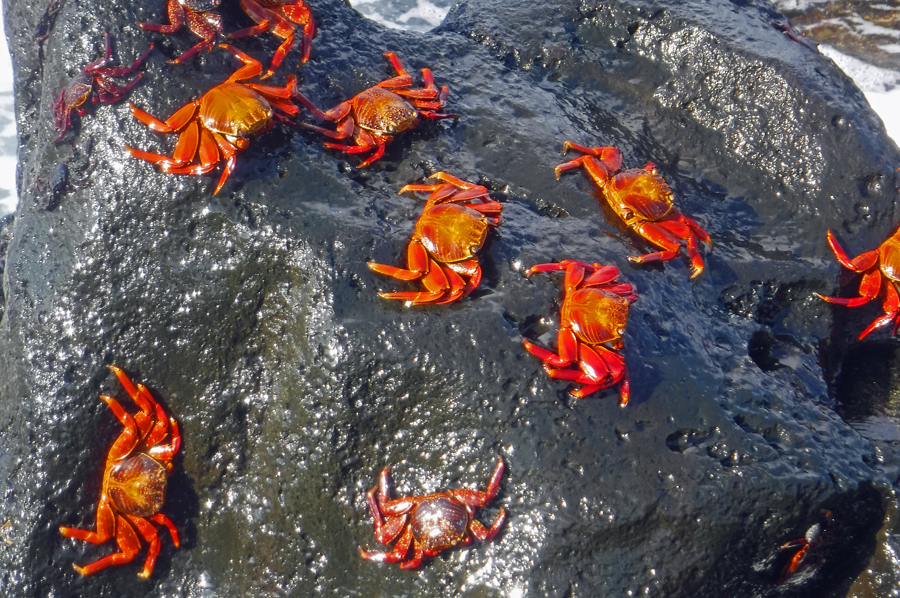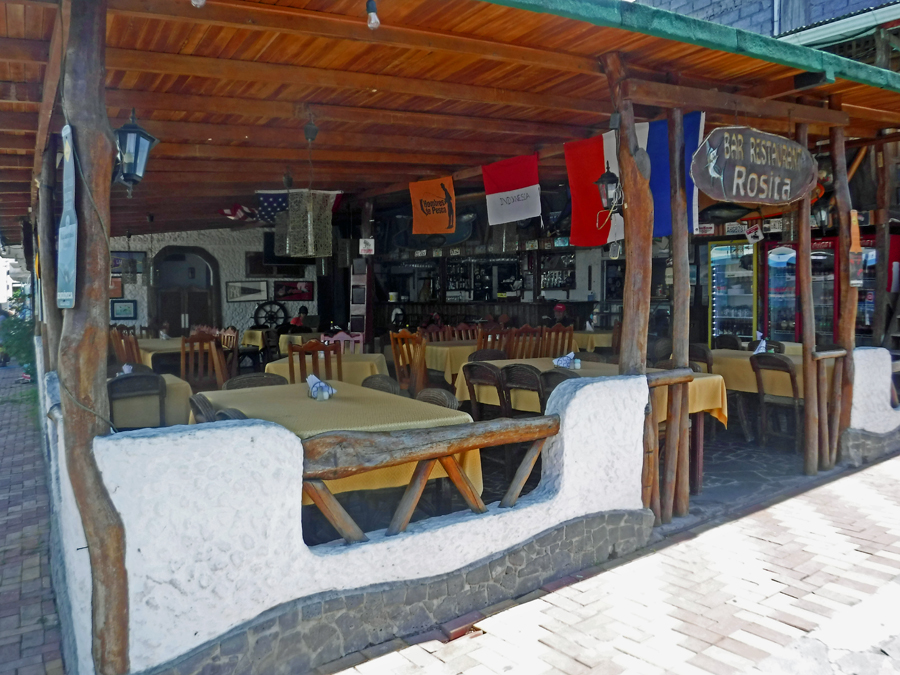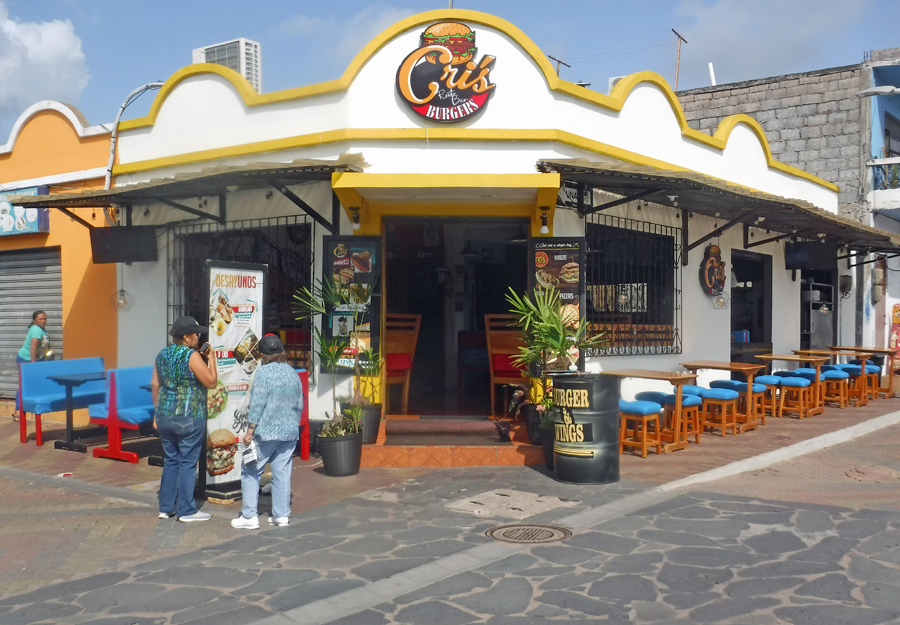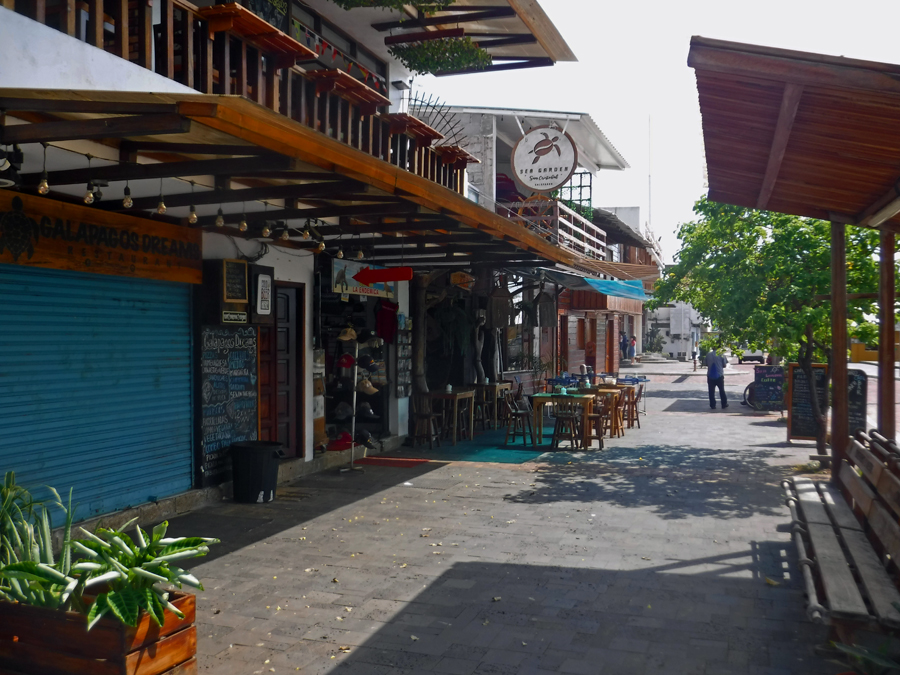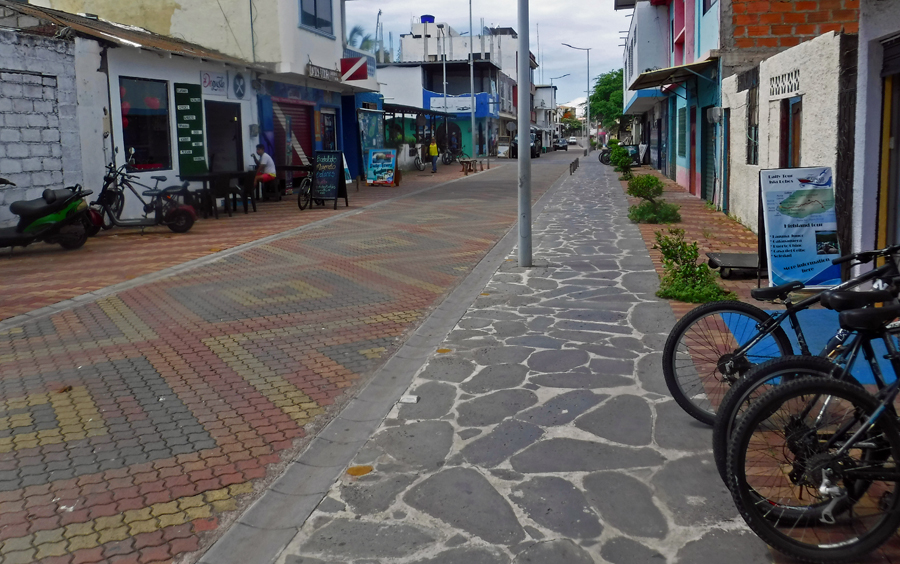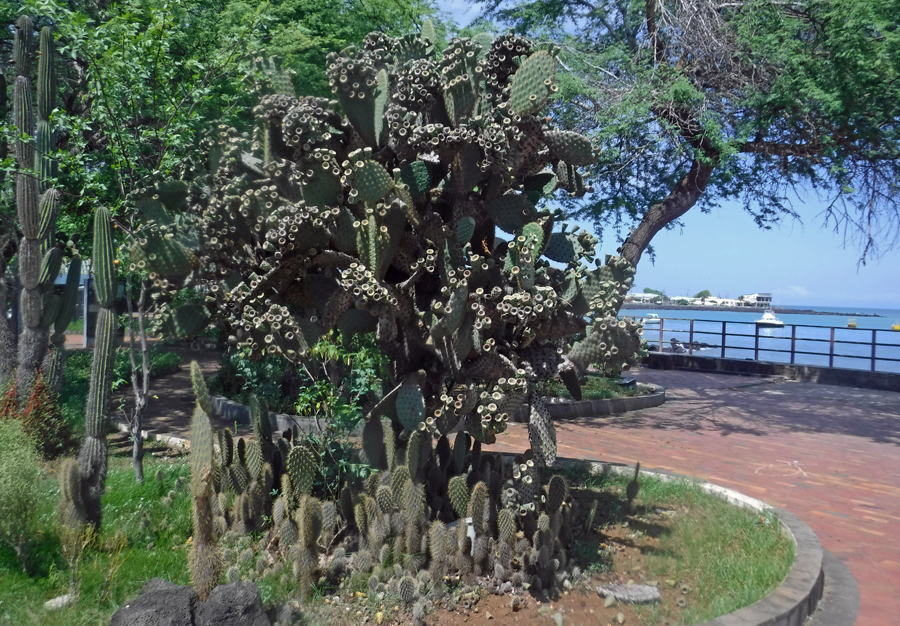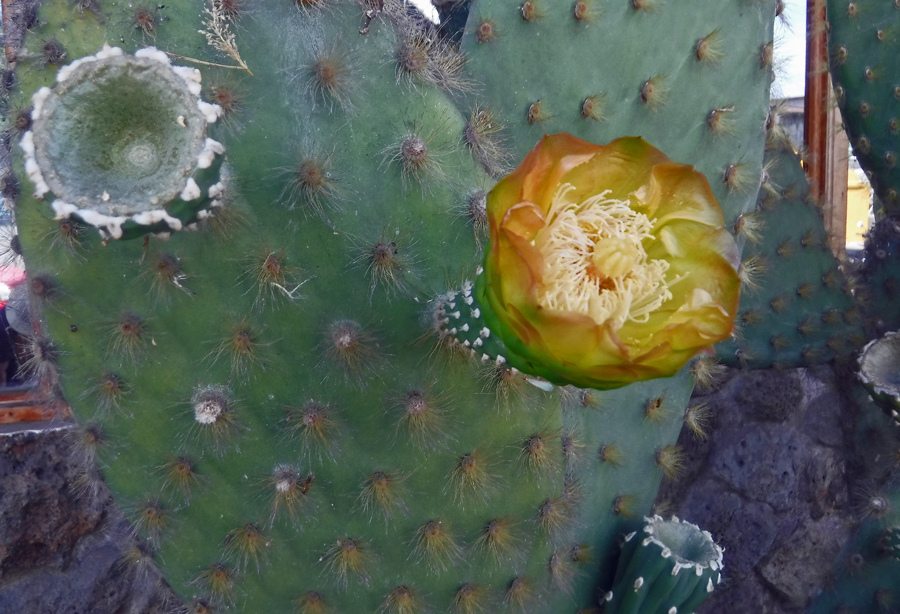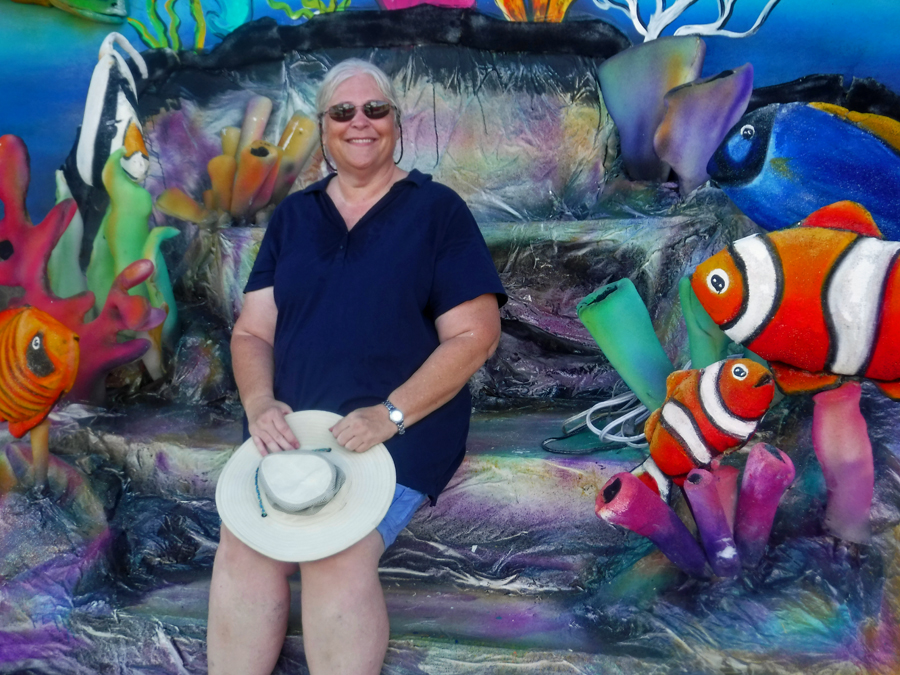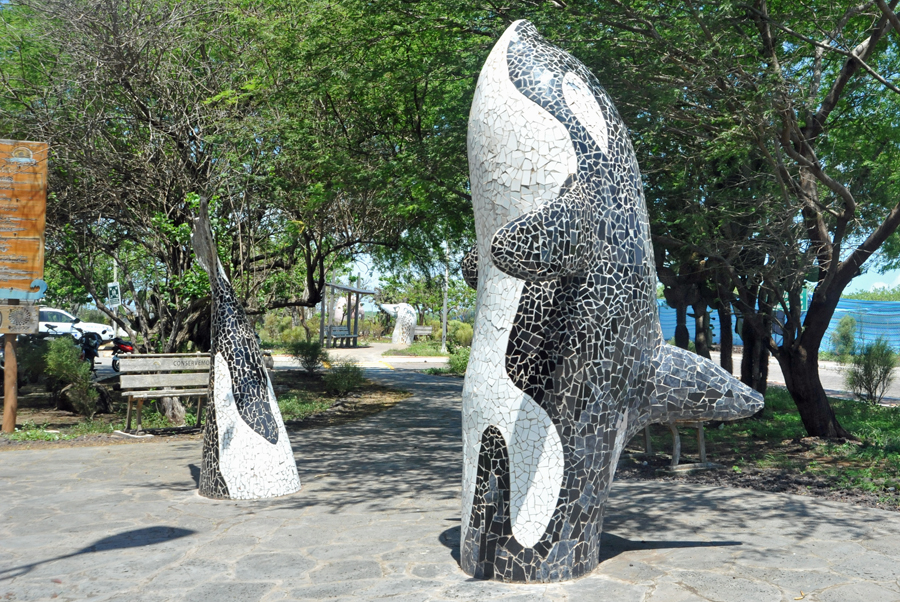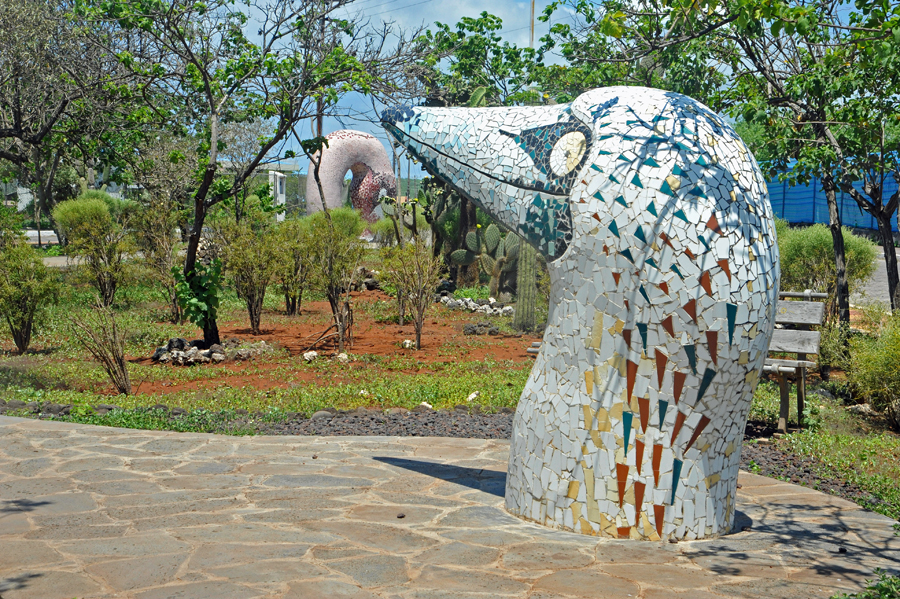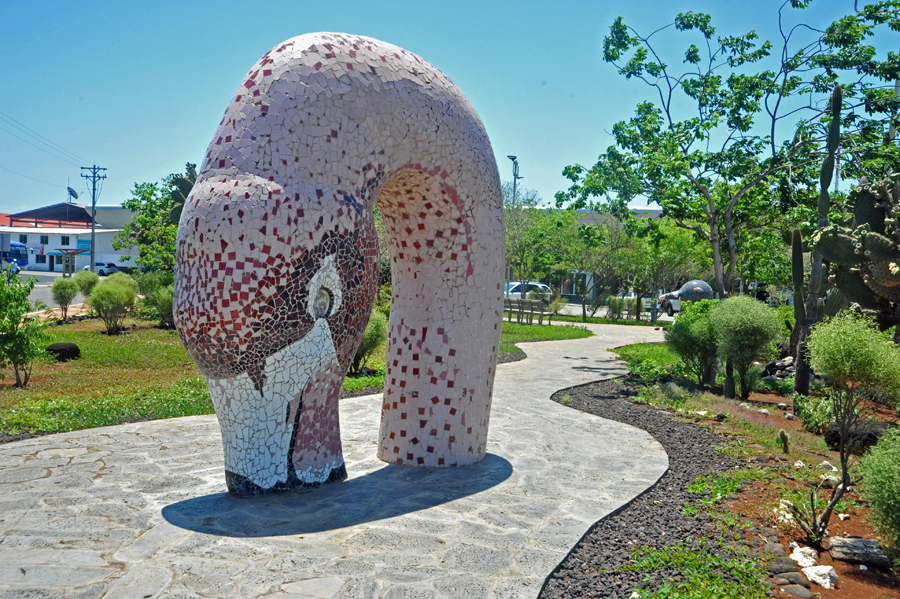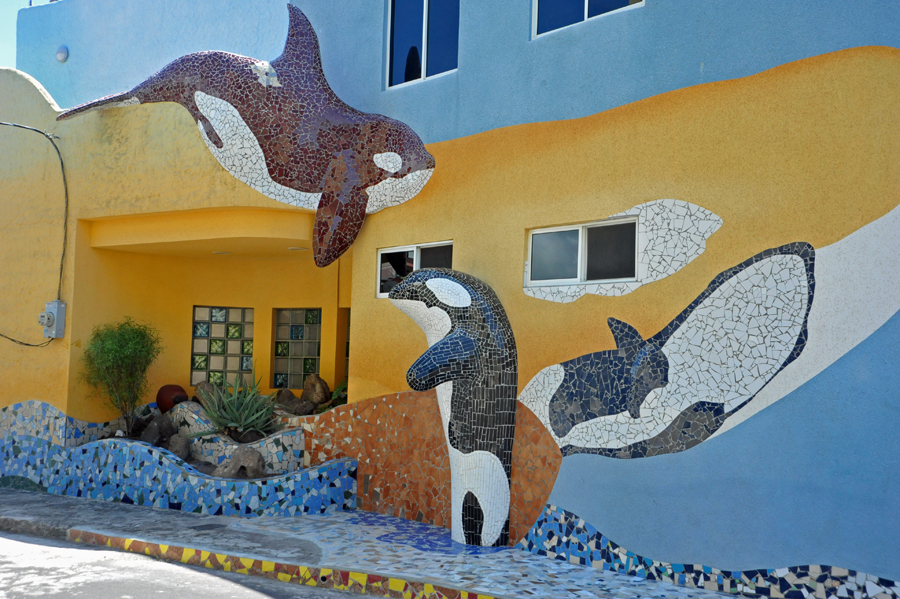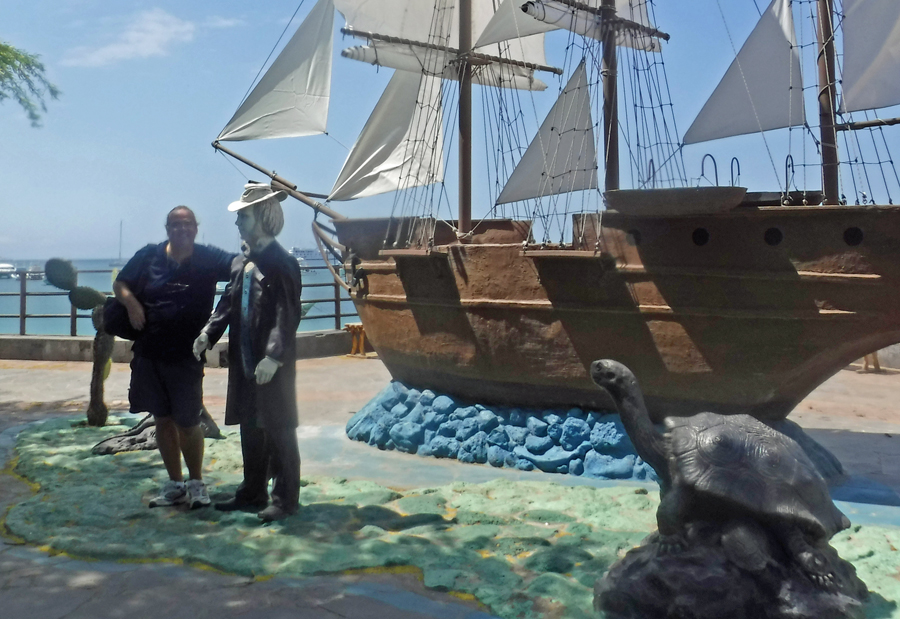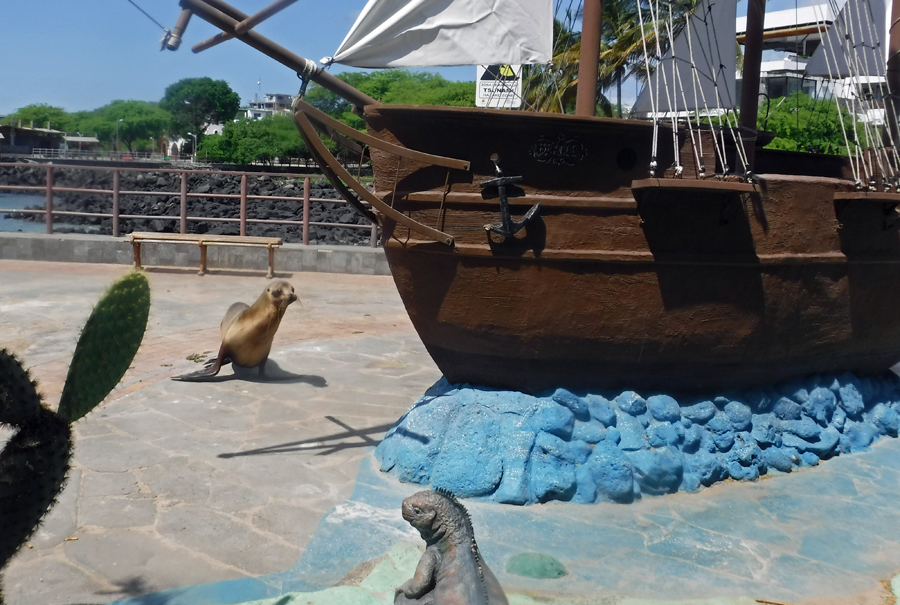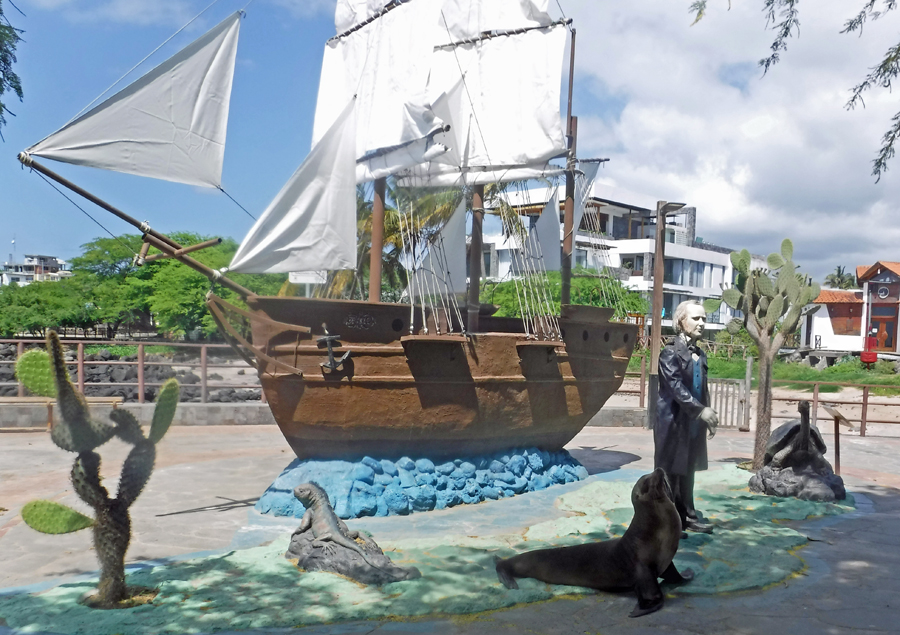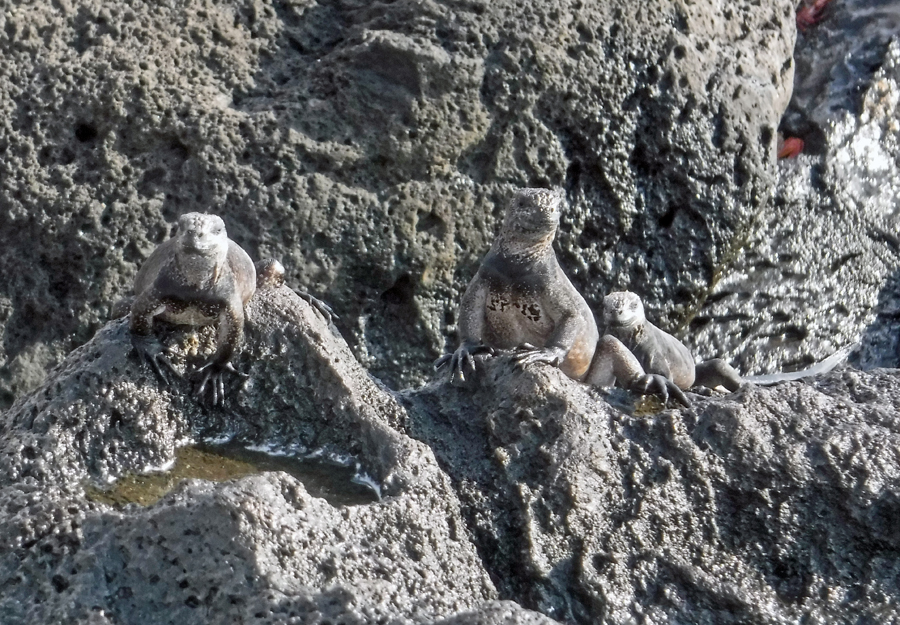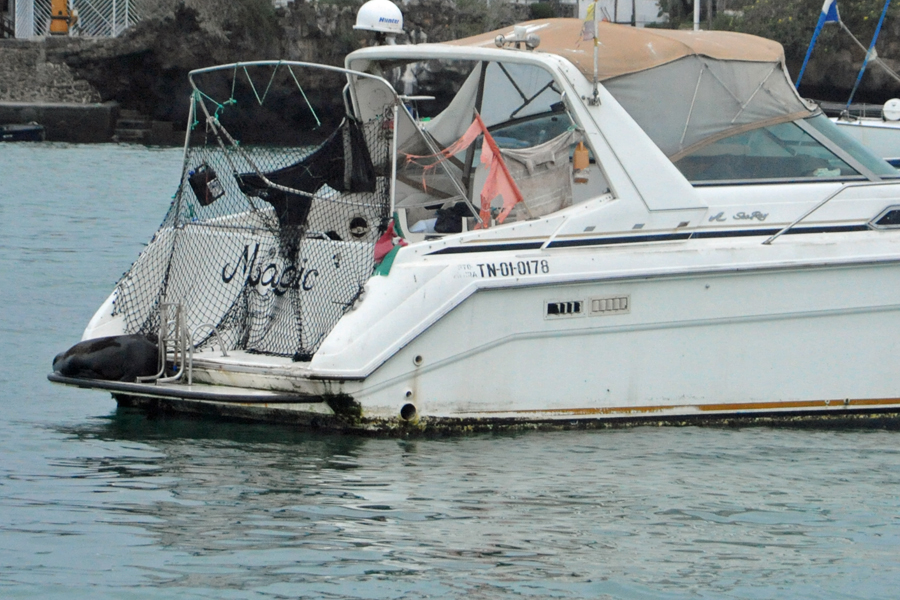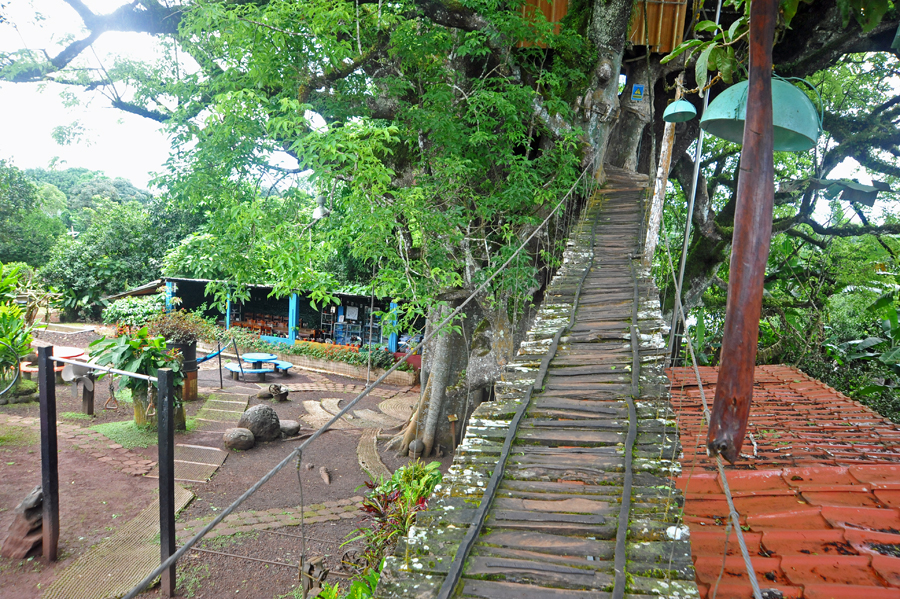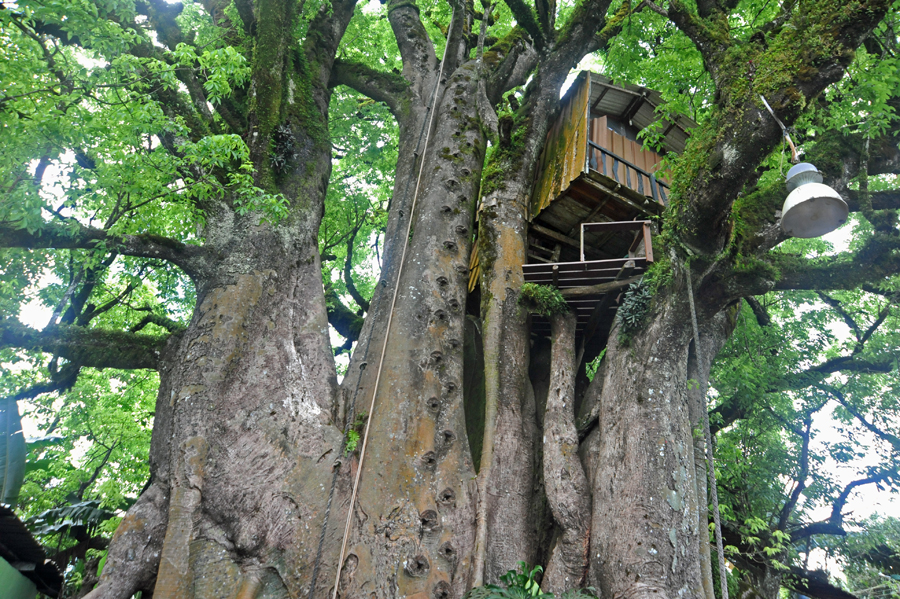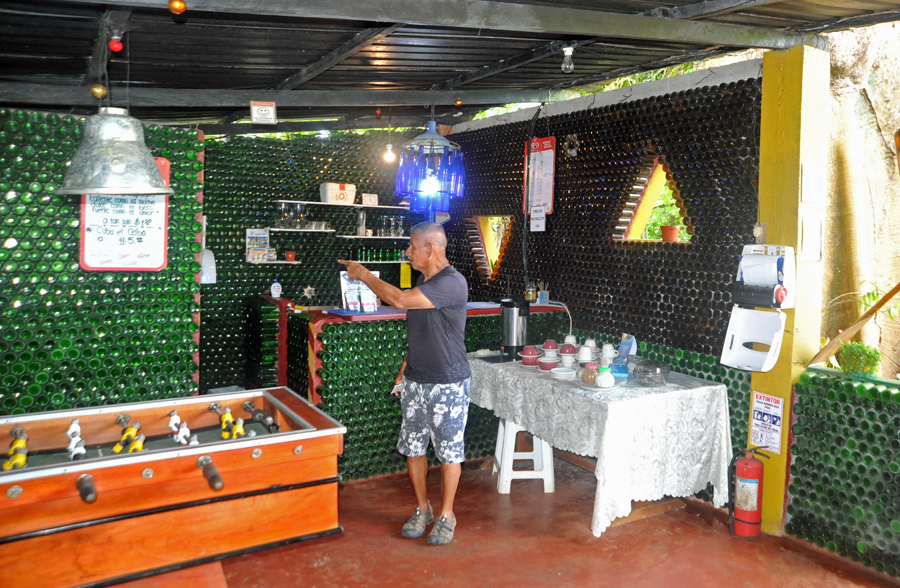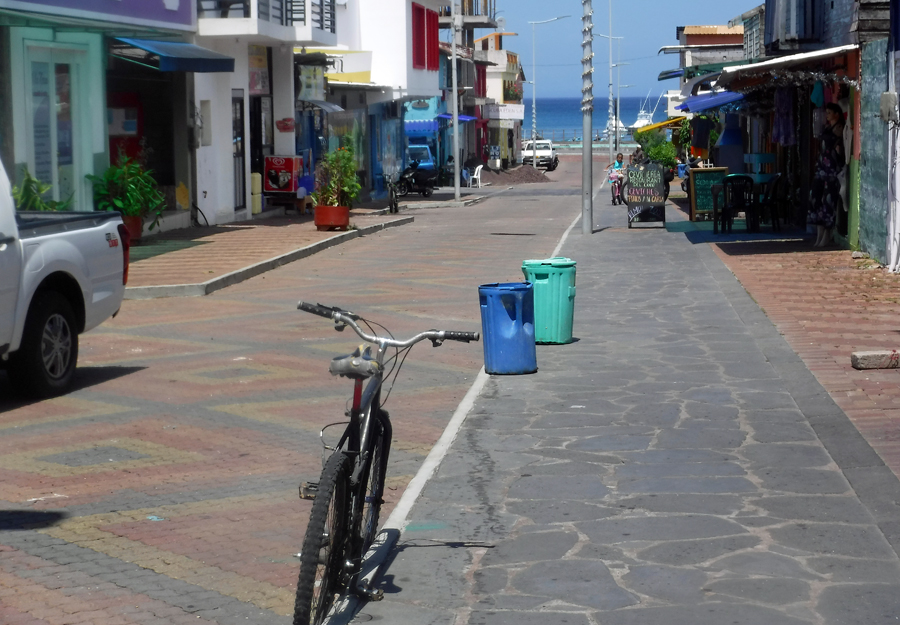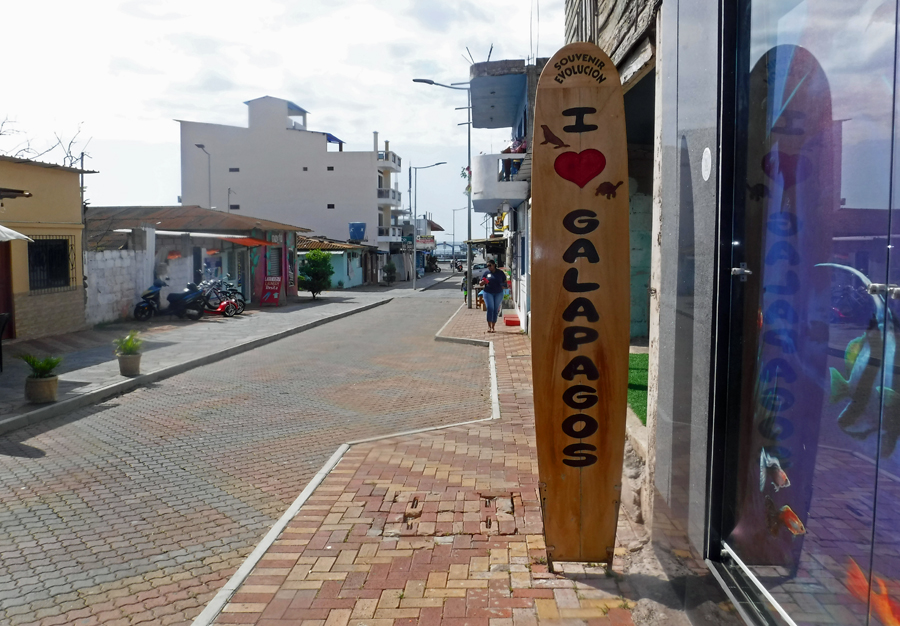Still on San Cristóbal, we are exploring the small town of Puerto Baquerizo Moreno. It is really charming. What has surprised me the most is the food here is very good. We fell in love with an open-air restaurant called Rosita’s. Looking at the menu, it has a dish for just about everyone. I couldn’t decide what to have so I asked Cindy if she would mind coming again tomorrow. She thought this to be a good idea since she also was having trouble deciding. The food was outstanding!
I find it interesting very few restaurants have any type of internet presence. One or two might have a FaceBook page. If they do have a web page, they tend not to include the menu. The reason I say I find this interesting is because it is my opinion most tourists look at reviews or pages prior to making a decision on where to dine. We often look at TripAdvisor or Google for reviews but if there is no menu link or an image in the pictures, we usually don’t bother to try it. Rosita’s had no internet presence but was near our agent’s office. We passed by a couple of times on our way to the office. Another good sign was the restaurant usually had a good number of people eating there. The menu was posted at the entrance and offered a wide variety. So glad we tried it.
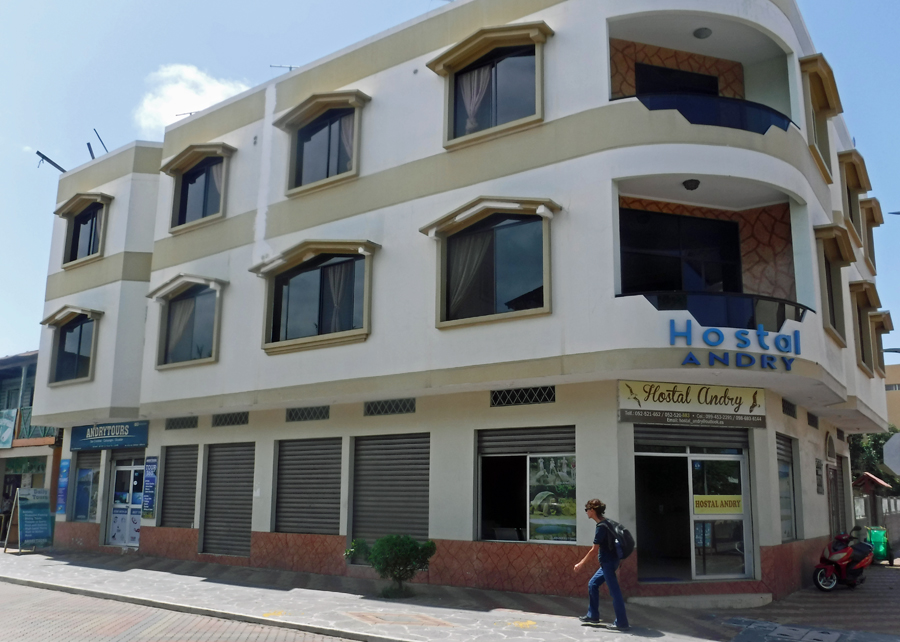
There are no chain hotels. staying here supports the local economy. Small hostels can be great places to stay
We decided to take a tour of the Interpretation Center (Centro de Interpretacion). From their website, it appears the center is operated by the University of North Carolina in the USA. This is a free smallish museum dedicated to the natural history of Galápagos. We learned how the islands are in a part of the pacific ring of fire and are volcanic. One of the more interesting facts are the islands are moving. They are heading east at a rate of 1.5 meters every 50 years. This is pretty fast for an island. I did the math. If we had just waited long enough we could have met the Galápagos Islands by wading out to them from a beach somewhere in Ecuador. This would have saved us all the trouble of sailing here. Of course, this would be in about 32 million years.
The center was very interesting but I couldn’t tolerate it. I wanted to stay longer but had to sit outside in the shade and wait for Cindy. Two reasons: A couple of unruly young children with insensitive inconsiderate parents. The other reason being the intense heat inside. I am sure the heat inside amplified the annoyance of the unruly kids. Whoever the architect of this building was should be punished. The punishment should be they have to live in the building for a month. I think this would probably kill them. The center has no open windows. And, the entrance and exit are located on the same facade eliminating the possibility for any breeze to flow through the building. Overall, a not so brilliant design for a building located on the equator. The inside was stifling.
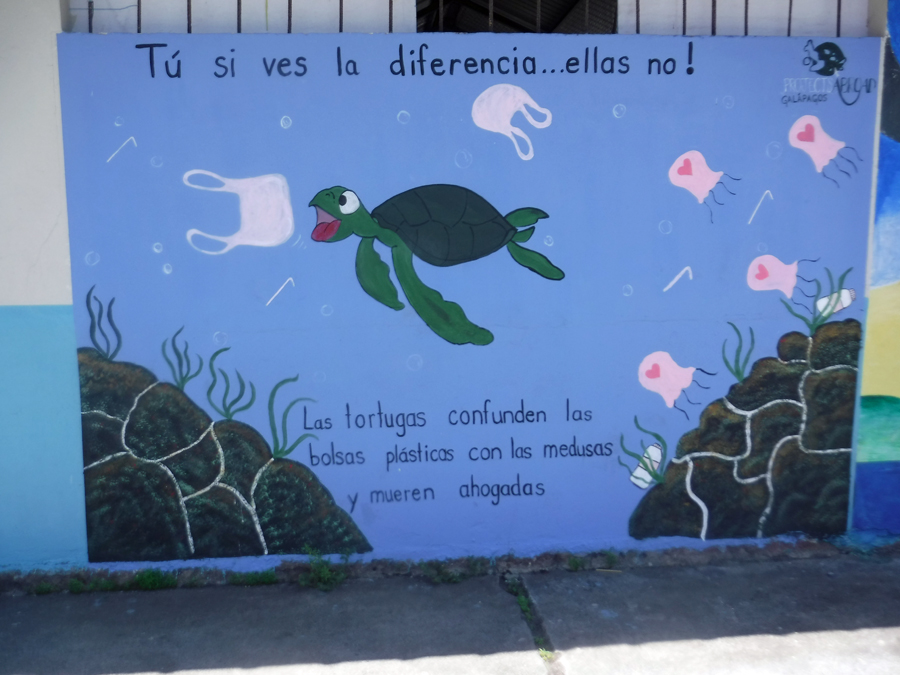
A mural on the education center: “Do you see the difference… they don’t” meaning turtles mistake plastic bags for jellyfish and die from them – Please don’t use plastic bags! Many Central American countries have banned them.
The people of Puerto Baquerizo Moreno live side by side with some of the most interesting animals. Seals and sea lions are everywhere. Other than being a little bit stinky, nobody seems to mind the occasional intruding seal. We found a statue in town dedicated to Charles Darwin with a large scale model of the ship HMS Beagle that carried him to these islands. I was clowning around with the stature and put my hat on Chuck. Cindy was taking my picture. We noticed a seal heading over to a bench where it presumably was going to lay and sun itself. It changed its mind and started to come over to the statue. The seals are completely undaunted by humans. They grunt if you try to make them move but this is about the extent of their aggressiveness. Once at the statue, it posed in-between the giant tortoise and marine iguana at the side of Charles Darwin. As Cindy said, the seal was trying to tell us the exhibit failed to include any seals in the sculpture and was therefore ensuring no tourists escaped the island unaware of the seal presence. As if we ever could.
Speaking of marine iguanas, they have smashed faces, spiky dorsal scales, and weird shaped head. Charles Darwin described them as “hideous-looking” and “most disgusting, clumsy lizards”. They also sneeze. They sneeze frequently. The reason they sneeze is that it helps them remove salt from glands near their noses.
The marine iguanas are assumed to have drifted out to sea millions of years ago on logs (they didn’t have floating plastic trash or flip flops back then). When landing in Galápagos the species emerged as marine iguanas, which spread to nearly all the islands of the archipelago. Each island hosts marine iguanas of unique size, shape, and color. Besides being “hideous-looking”, they are actually very gentle. They eat algae off the rocks with their razor-sharp teeth and are incredible swimmers. Their sharp claws allow them to cling to rocks in waves and currents. The dark color skin helps them absorb sunlight once they emerge from the cool ocean waters surrounding the islands. Once again, they are not intimidated by humans. You have to get within a couple of feet before they scurry off.
To get to the shore from Cream Puff, we call a water taxi on channel 14 using the VHF radio. It costs us $1 each for the ride. The drivers are very skilled at positioning their vessels to align with the aft steps on Cream Puff’s transom making it easy for us to step on and off. We do not use our dinghy here for two very good reasons. First, there is no dock ashore to tie and leave the dinghy. The three town docks are constantly in use by water taxis or transport vessels shuttling tourists from small cruise-ships. However, the main reason we don’t dare put our dinghy in the water is it would be full of seals in about five minutes.
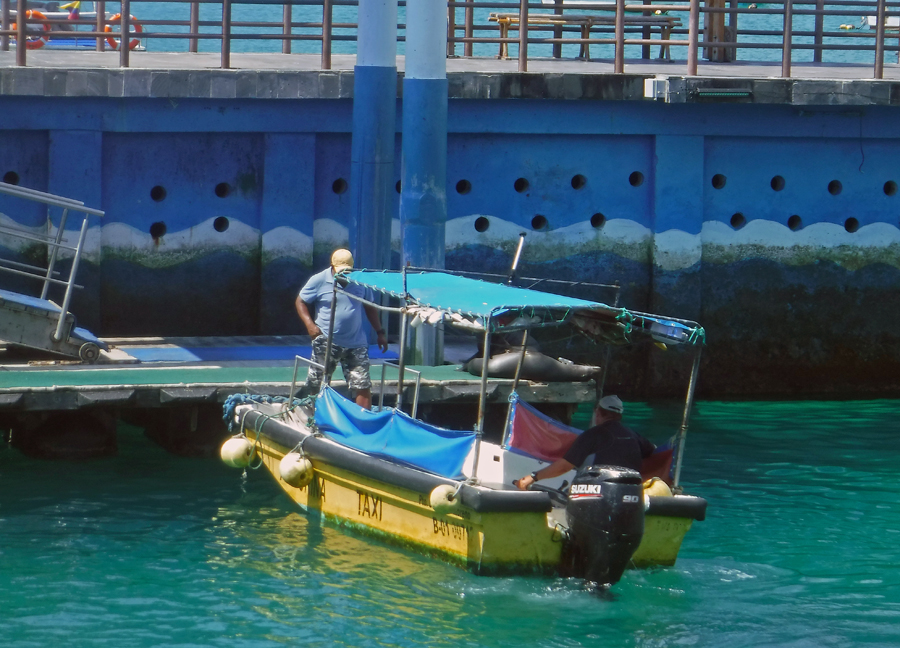
We use water taxis to get from Cream Puff to the shore – They are on $1 each – note the seals on the dock
The locals have various methods to keep seals off their boats. As we travel the harbor by water taxi, I am amazed by the creativity of these seamen. Some have created a barbed-wire barrier resembling a prison fence. Others have the entire back portion of the vessel covered with a thick fishing net. Having these barriers makes getting on and off the water taxi look like a Cirque du Soleil acrobatic act. We hung fenders off the back of Cream Puff and placed jerry cans across the aft rail by the sugar scoop transom steps. This seemed to work to keep most seals off the boat but not all. We had to chase a few back into the water. They usually get on when we were in town and had to move our barrier so we could board when we returned. The seal will splash back into the water when the taxi pulls up. I often get grunted at as I force the seal into the water. They are professional sunbathers who don’t like to be bothered once they have found a spot.
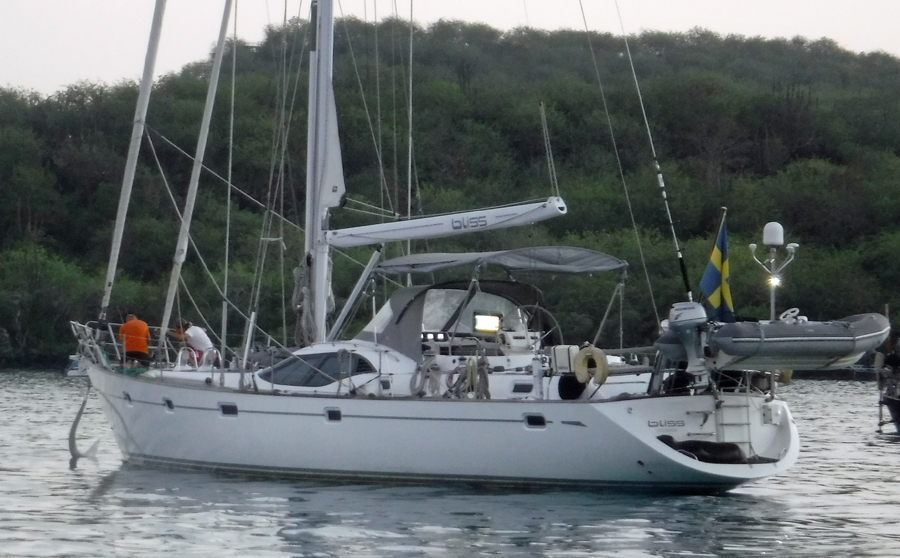
These cruisers on a Swedish boat called Bliss are leaving. Unaware as they raise anchor, they have a seal asleep on the back – I wonder where it wakes up (they were off to another island just 50 miles away)
Just outside of Puerto Baquerizo Moreno is a very small town called San Cristobal. The population is about 100 people. In this tiny village, a creative entrepreneur purchased a piece of land with a massive tree. He built an entire attraction around this tree including a restaurant and an incredible tree-house. The tree-house is every child’s dream. There is a rickety catwalk to the house and once inside, it has a small kitchenette, bathroom, sitting area and two twin beds in the loft. The treehouse can be rented overnight for $25. It’s on Airbnb. I know this next part is going to sound a little be funny to you coming from two people who live on a boat, a boat that rocks all the time. The swaying of the tree made both Cindy and I a little nervous.
In addition to the awesome treehouse, the property has a restaurant built entirely of bottles. Yes, bottles. This made me wonder a little bit. Where did all these bottles come from? What was in them? And, who drank the contents and over what period of time? The answers were on a small tour card handed to us when we paid the $2 to enter allowing us to freely wander about the property including going into the treehouse. There are over 20,000 bottles all collected from the locals. They were sorted by size and color before being used in the construction process. The contents varied. The owner has information cards in all languages with answers to the many questions posed by curious tourists like us.
So far, Galápagos has far exceeded my expectations. The animals are everywhere and if you want to see them you don’t have to try very hard. The town is clean, safe and offers a variety of eateries. There is no crime here. None! It is safe for everyone to roam about no matter what time of day or night. People leave their bicycles leaned unlocked against a post or building. Cars are parked with the keys in the ignition and the windows down. Motorcycles are left with the helmet (not required) on the seat and the keys in the lock. During our taxi tour, Carlito did lock the car but only because we asked him to as our backpack was on the back seat. Yep! I am liking it here.
We are about to move to our next port on Santa Cruz Island. This has a slightly bigger town and is a little more touristy. Many tourists go to Santa Cruz and use it as a base to ferry to all other islands in the Galápagos chain. We have collected our zarpe and paid the exit fee. Yes, they have entrance fees and exit fees. We are hoping for a little wind but the forecast thinks otherwise. It is only about 45 miles away. If we leave in the early morning, we’ll be there in time for lunch. More to come. Stay tuned.

